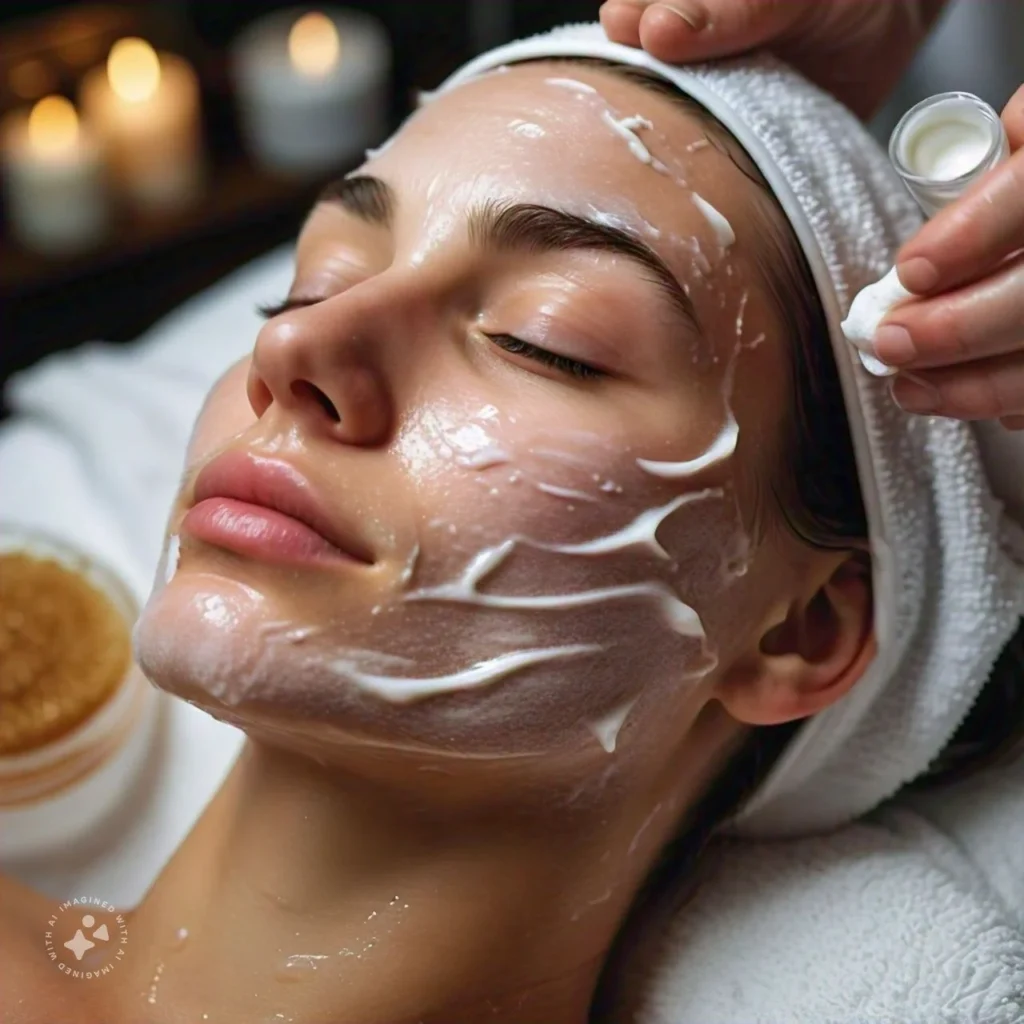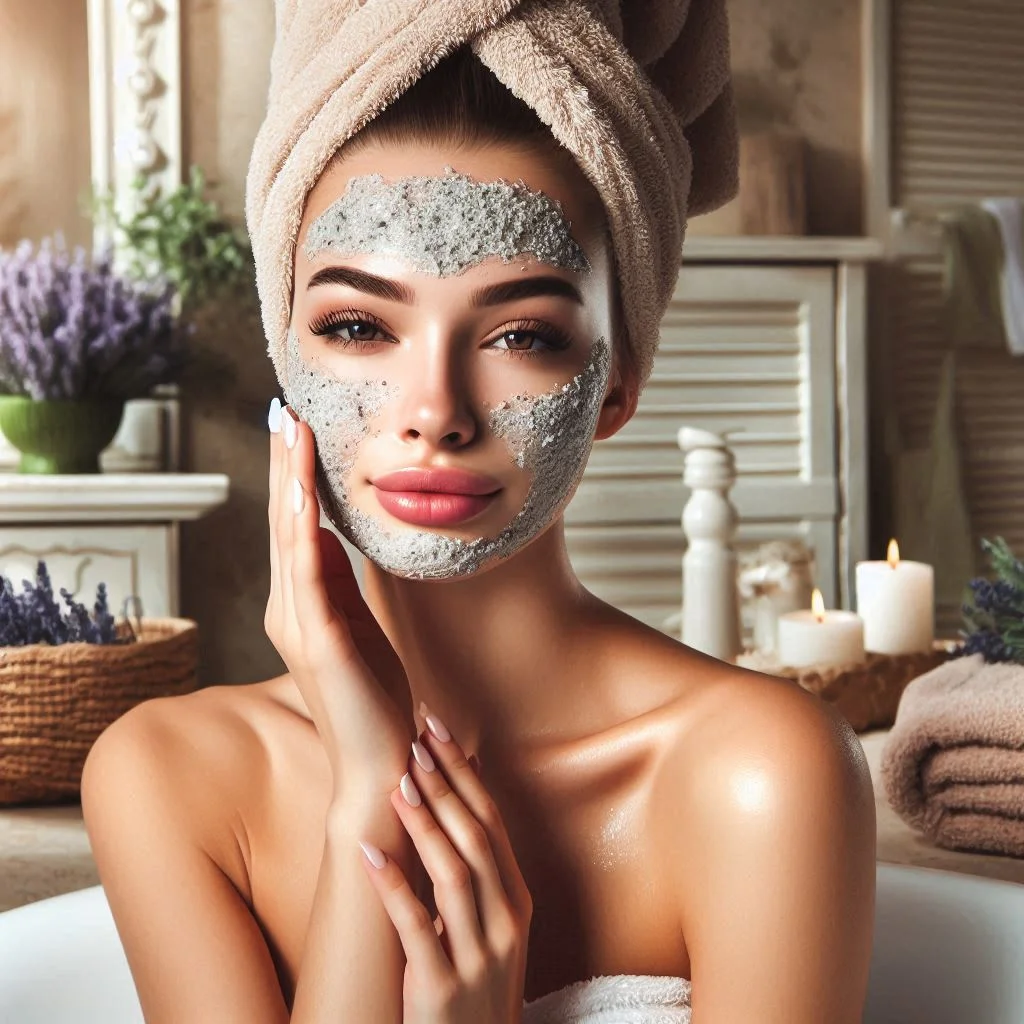How to exfoliate by skin type?
If you feel your skin is becoming dull or dry after your skincare routine, then it may be a sign that you need to exfoliate. Now a days we see a lot of exfoliating products out there. Different kinds, from beads to peeling gels to clay masks and so on. It’s really important to find the perfect exfoliating product according to your skin type.
Today at Sphere medium, I’ll share with you everything you need to know about exfoliation, why is it important, and how to exfoliate by skin type?

Why exfoliate?
As we age, our skin’s cell turnover cycle changes. When you’re a baby, it takes about 14 days for old cells to shed off ; in teens, it takes about 21 to 28 days; in your 20s to 40s, it takes about 28 days to 42 days; and when you’re in your 50s and above, it can take up to 42 days to even 84 days.
During this skin’s cell turnover cycle, the dead skin cells at the top layer of skin are completely peeled off, and the new skin layer underneath the top layer becomes the new outer layer, but oftentimes not all of the dead skin cells are completely peeled off. That’s why we get buildup of skin cells, causing dull skin and clogging of pores as well.
Now, when this happens, you need to exfoliate your skin to keep your skin healthy.
When should I exfoliate?

Go through the checklist below and ask yourself
- Does my skin look more dull than before?
- Do you see more fine lines even after moisturizing?
- Does your skin feel more dehydrated than before?
- Does your skin tone look uneven?
- Are you getting more breakouts than before?
If answer is yes than you need to exfoliate.
Types of exfoliation
There are two different types of exfoliation.
Chemical exfoliation: is using a chemical substance to remove the skin cells
Physical exfoliation: is using physical force to remove dead skin cells like grains, beads, shells or brush .
Since chemical exfoliation is the most recommended method therefore let’s discuses it.

Types of chemical exfoliating ingredients
Let’s talk about the different types of chemical exfoliating ingredients.

AHA: Alpha-hydroxy acid
- It’s a plant-based chemical substance that is extracted from fruits.
- It is water-soluble.
- It actually exfoliates the outer layer of your skin and evens skin texture and tone.
- Hydrating
- It helps with collagen regeneration, so it helps with signs of aging.
- It contains glycolic acid, citric acid, mandelic acid, lactic acid.
Con: AHA’s make skin sensitive to the UV rays So whenever you use a product with AHA you do have to wear sunscreen.

PHA: polyhydroxyacid
- Very similar to AHA, but it does have a larger molecule size, so it sinks down into the skin slower, which makes it less irritating to the skin.
- It doesn’t make your skin sensitive to the UV rays like AHA does.
- Contains gluconolacctone and lacto bionic acid.

BHA: Beta hydroxy acid
Unlike AHA that works to exfoliate the outer layer of your skin, BHA is
- Oil-soluble; it will sink deep into your pores to cleanse out pores and remove those skin cells.
- It will also help with inflammation, targeting acne, acne marks, and black and white heads. 3. Includes salicylic acid.

LHA: Lipo hydroxy Acid
LHA is extracted from salicylic acid, which is a BHA ingredient, and like BHA, it is oil-soluble, so it will sink deeper into pores, but it’s less irritating to the skin because of its high liposolubility, so the chemical reactions actually hit slower, which makes it less irritating for the skin.

Enzymes
- Extracted from fruits, and unlike AHA BHA PHA or LHA, it doesn’t affect the skin’s turnover cycle and naturally exfoliates your skin.
- It cuts the substances that hold the dead skin cells together and makes the dead skin cells fall out.
- It doesn’t push out the new skin layer like other chemical exfoliating ingredients.
Exfoliation by skin type
Now that there are so many different types of chemical exfoliating ingredients, let’s find out which one will suit various skin types the best.
Dry skin Exfoliation
For dry skin types :try AHA. It exfoliates the outermost layer, which is perfect for dry skin types, and please don’t forget to hydrate your skin right after exfoliation.
For dry and sensitive skin types :use a low percentage of AHA around five percent because a higher percentage means a stronger exfoliating effect or PHA, which is very similar to AHA but has a larger molecular size, so it sinks down to the skin slowly, which is less irritating for the skin.
Exfoliate dry skin once every week or two weeks.

Oily skin Exfoliation
For oily acne-prone skin : Avoid physical exfoliations, because most likely, if you have acne-prone skin, you’re going to have a lot of inflammation, and you want to avoid any ingredients that can cause more inflammation.
Use a chemical exfoliating ingredient like BHAs since it’s oil-soluble, it will help to remove the dead skin cells and sebum that can clog your pores. Also, it helps with acne scar recovery.
Exfoliate twice a week.
Acne-prone sensitive skin: try LHA because it sinks down into skin slowly. Exfoliate about once a week.
Sensitive skin Exfoliation:
Now if you feel like most exfoliators irritate your skin, such as physical exfoliators AHAs, BHAs, PHAs, or LHAs, then use an exfoliator with enzymes; it doesn’t peel off the epidermis layer, but it melts the impurities and dead skin cells on the surface layer only, and it is the safest option for you if you have sensitive skin.
For sensitive skin types, exfoliate skin about once every week or two weeks.
Mature/aged skin Exfoliation
Sadly, most aged skin is sensitive and dry. However, you can’t skip exfoliation just because your skin is dry and sensitive. Exfoliation is amazing for skin regeneration, and it will also help the active ingredients soak better into your skin.
Now if you want to prevent moisture loss during exfoliation, then use AHAs.
If AHA seems a little bit too strong for you, try using PHAs, and if PHA is still irritating for your skin, then try enzymes, but the most important thing is to hydrate your skin thoroughly after exfoliation for aged skin.
Exfoliate about once a week or two weeks.
How to know if I’m over exfoliating?
Signs you’re exfoliating too much are: Itchiness, redness, dryness, burning sensation. If you experience any of these symptoms then stop all actives and moisturize with skin-soothing ingredients containing panthenol, centella asiatica and ceramides.
What to do after exfoliation?
- Don’t forget to moisturize your skin after exfoliation. Repetitive exfoliation without proper moisturizing care can make skin dry. Do use moisturizer with humectants like glycerin, hyaluronic acid, and ceramides.
- Apply sunscreen before you go out. Now this is a really important tip because your skin is more prone to the UV rays after exfoliation.
- Give your skin a break after exfoliation. You want to make sure to avoid any exfoliating ingredients after exfoliation.
Today at Sphere medium we talked about the different kinds of exfoliating chemical ingredients and how to exfoliate by skin type. I hope now you guys have a better sense of what exfoliation is, why it is so important, and also why it is very important to choose the effective, right exfoliating product for your skin type.

FAQs
At around 25 years.
Those having sensitive, irritated skin with itching or having rosacea should avoid exfoliation.
This is different based on your skin type. For dry skin, once every 1-2 weeks; for combination skin, once a week. Oily skin twice every week. But you can’t stick to just one rule because everyone has different skin types. If you have extremely dry skin, it’s best if you exfoliate once a month, or not even at all.
: Instead of physical exfoliants, use chemical exfoliators. BHA toners in particular are good for acne-prone skin, so use these kinds of products with a cotton pad to gently wipe the face for mild exfoliation. However, after doing so, moisturizing the skin is key.
Useful Links

I am a dentist, baker, and fitness and health enthusiast with a passion for living life to the fullest. I am foodie and explorer, always seeking new adventures and flavors. Currently working on my own skincare brand.



1 Comment
[…] know more about exfoliants according to skin type, please read “Mastering Exfoliation: Find the Best Method for Your Skin Type” at Sphere […]